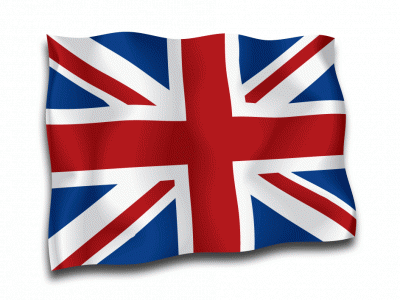ОҚО. Мақтарал ауданы, Асықата кенті
«Асықата» жалпы орта мектебі
Ибрагимова Сапаркүл Досыбекқызы
Ағылшын тілі мұғалімі
Цели урока:
Учебный аспект: совершенствовать навыки говорения; обучить грамматике (употребление артикля с названиями веществ, употребление местоимений (a) few/ (a) little / much / many с неисчисляемыми существительными); обучить чтению с извлечением основной информации; обучить аудированию; активизировать новые лексические единицы и речевые обороты в устной речи и письме.
Развивающий аспект: развивать мышление, внимание, память, любознательность учащихся.
Воспитательный аспект: воспитывать у школьников правильное отношение к своему здоровью, познакомить их со здоровым образом жизни, правильным питанием.
Познавательный аспект: расширить кругозор учащихся, формировать коммуникативную компетенцию.
Оборудование: УМК К.И. Кауфман, М.Ю. Кауфман »Счастливый английский.ru», аудиозапись, плакаты по теме, картинки с изображениями продуктов питания.
Ход урока
Warm up.
T: Hello, boys and girls! How are you? I hope that you are fine. Today we’ll speak about a healthy way of life. Can you tell me what should you do to be fit, to be healthy?
P1: I think we should do morning exercises.
P2: I think young people shouldn’t smoke or drink alcoholic drinks. It’s harmful to your health
P3: I think we have to go in for sport; we should eat a right food.
Introducing new words and new expressions.
T: I agree with you. Now look at the blackboard. Here we have the words and expressions. Listen to them and repeat them after the speaker and match the words with their translations.
P1: grains (bread, pasta) — зерновые, vegetables (potatoes, tomatoes) — овощи, fruit (oranges, strawberries) — фрукты.
P2: meat (beef, pork) — мясо, fish — рыба, dairy products (milk, cheese, yoghurt) — молочные продукты.
P3: fat and sugar — жиры и сахар, soda — газированные напитки, to feel full — испытывать ощущение сытости, to skip meals — пропускать еду.
Т: Now, boys and girls, look at the pictures of the products. Give more examples of dairy products, fat and sugar, meat, fish, fruit, vegetables and grains.
P1: dairy products — are sour cream, cottage cheese, yoghurt, milk; fat and sugar are — butter, sweets, eggs, oil.
P2: meat — is pork, chicken, ham, sausages; fish — are salmon, tuna fish.
P3: vegetables — are carrots, cucumbers, cabbage, beans, peas, onions, peppers, mushrooms; fruit are bananas apples.
Developping grammer skills.
T: I like your work, children. Now let’s speak about grammar. Let’s remember what nouns are called countable and what nouns are called uncountable ones?
P1: Countable nouns are the nouns which we can count. And uncountable nouns are the nouns which we can not count.
T: Неисчисляемые существительные, обозначающие названия веществ, употребляются без артикля, если в предложении это вещество только называется.
I don’ like milk.
Артикль the с названиями веществ употребляется, если речь идет о конкретном веществе, находящемся в поле зрения говорящего.
The meat they were eating was tasty.
T: Now, children, let’s do grammar exercises. Fill in the gaps with the article the when necessary.
P1: He said that there was butter, sugar, salt, and water in the cake.
P2: The snow round our house was dirty.
P3: My friend doesn’t eat meat. Children should drink milk in the morning.
P4: At what temperature does ice melt?
T: I like your work. Let’s do another exercise. Choose the correct word and complete the sentences with some or indefinite article a/an:
P1: I’d like some cheese. We all eat an apple every day.
P2: I need some meat, some potatoes and a bottle of orange juice.
T: Now let’s remember the use of pronouns much/ many/ a lot/ a few/ a little/ fewer/ less/ more and do another exercise. You’ll have to complete the sentences with these pronouns:
P1: Don’t put so much salt in your soup. You need very little salt every day.
P2: We don’t have many carrots. Next time you should buy more.
P3: Would you like some cheese? Just a little. I’m not hungry, but I’d like to try it.
Developping reading skills and speaking skills.
T: Thank you very much. Now I want you to read an article on a healthy lifestyle and then discuss it. Ученики читают статью о здоровом образе жизни с извлечением полной информации (Приложение).
T: You have read the article. And I’ll tell you some statements on a healthy lifestyle and you’ll say if they are true, false or you don’t know.
T: You should do morning exercises to be fit.
P1: It is true. Physical activity is very important for a healthy lifestyle.
T: You should eat more fruit and vegetables and less sugar and fat.
P2: It is true. You should eat smaller portions but not skip meals.
T: You can read or watch TV when you eat.
P3: It is false. You should not read or watch TV when you eat. You should concentrate on your food.
T: If you burn more calories, you lose more weight.
P1: It’s true. Everything you do — smiling, talking, reading — burns calories. But if you want to be fit, you’ll have to do more.
T: You should drink a lot of water.
P2: It is true. You should drink at least two litres of water every day.
T: You can eat any time you want.
P3: It is false. You should not eat after 7 p.m.
T: Diets that are too strict can make you fatter.
P4: It is true. A diet like this will leave you feeling weak and give you headaches, bad breath and bad skin. When you finish it you can gain some excess weight.
T: Diet pills sometimes work.
P5: It is false. Most of them are not safe either.
T: Fruit is better than juice.
P6: It is true. Some juices contain a lot of sugar, which is bad for your teeth. As an alternative just have an apple or a carrot.
T: Only swimming and jogging can help you burn calories.
P7: It is false. Everything you do — riding a bicycle, go swimming or jogging, washing the floors in your home or walking the dog — burns calories.
Developping listening skills.
T: Now, boys and girls, I wonder if you are eating the right food. How many servings a day of these things do you eat? Fill in the table with the information about yourself. And then listen to the speaker and find out how many servings of these things you should eat.
Pupils fill in the table. Then they analyze their results using the phrases and expressions from the «conversation bricks».
T: Now, children, let’s analyze your results.
P1: I should eat three servings a day of dairy products, but I don’t. It’s OK because I’m actually allergic to them.
P2: I should eat four servings of fruit and vegetables a day and I do. I’m a vegetarian.
P3: I should eat four servings of meat/fish every day. And it’s not enough. I eat six servings a day.
P4: I should eat four servings of grains every day, but I don’t. I can’t stand it.
P5: I should eat two servings of fat and sugar a day, but I don’t. I eat four servings a day. It’s delicious. I can gain weight if I eat too many sweets.
T: Thank you very much for you answers. I hope you will follow the healthy lifestyle.
Summing up.
Homework.
[bws_related_posts]
 sabaq.kz sabaq.kz
sabaq.kz sabaq.kz

